The month of May is a show-off. Early morning fog wisps through the valleys. Grass glows green under the deep blue sky. Woodland wildflowers jump out of the ground, demanding attention. Trees flower and leaves burst from long-dormant buds. Birds arrive on southern night winds and liven the dawn with a chorus of song. May shouts of life and rejuvenation.
Tasting the spring Air
When it comes to tongue wagging, snakes beat even the best gossipers in town. Their tongues seem to flick in, out and about incessantly as they bask in the spring sun. Like the ears of a gossiper, the snake’s tongue searches for information.
Garter snakes have especially colorful tongues – a bright red base and glossy black forked tips. They are also highly sensitive chemical collectors. With each tongue wag, airborne molecules are captured for analysis. Even with its mouth closed, the snake can slide its tongue through a space in its upper jaw.
Inside the mouth the tongue’s forked tips deliver captured molecules to the vomeronasal organ (VNO), also called the Jacobson’s organ, located in the palate below the nasal cavity. In mammals this organ opens to the nose, but in snakes it opens to the mouth via small ducts. The tips of the tongue are drawn over narrow grooves in the roof of the mouth, which pass chemical information into the ducts and up to the VNO.
The VNO has two openings in the palate. Its forked tongue may actually allow the snake to have stereo chemo-sensation. If an odor is stronger on one side, the snake can ascertain direction to the source. The chemo-sensation of the VNO in snakes is much greater than in most mammals. The next time you see a snake, don’t be alarmed by its tongue wagging. It’s just tasting your scent.
Red Bats Arrive
Eastern Red Bats arrive back in northern New England from the south in May, although little is known about their migration routes or overwintering range. They are strong fliers and are sometimes seen migrating during the day. There have even been reports of the species far offshore during migration. One individual was found 65 miles off the New England coast.
Eastern Red Bats vary in color from brick red to buffy orange. The hairs of the back are tipped with white. Males tend to be less frosted with white than females, but are brighter in color. Both sexes have a buffy-white shoulder patch.
Once here, Eastern Red Bats roost by day 30-40 feet high in the foliage of deciduous trees. They select perches that are open from below to permit easy access, but otherwise densely shaded to hide from predators. They hang by one or both feet and resemble a dead leaf.
Eastern Red Bats breed in August and September, but fertilization doesn’t occur until nearly 8 months later in spring. A litter of 1 to 5 young is born in June or early July, the largest litter size of any bat. Young remain at the roost while their mother forages. Adults feed on many different types of flying insects, but beetles and moths comprise about 50% of their diet. When the mother returns to the roost, the young grasp her with their wings and teeth to nurse. Nursing occurs over about 1-2 months, and until the young become independent and disperse.
A Swift Return

A closeup view of a Chimney Swift about to be released after receiving a uniquely-numbered band on its leg for identification. / © K.P. McFarland
There is nothing that says spring more than the chattering of Chimney Swifts over town. The swifts circle back and forth picking out the best chimneys for roosting and nesting. Before European settlement, they likely used giant hollow trees in the forest or shallow caves; some may still. But with the loss of big snags in the forest and the construction of chimneys in the towns and cities, Chimney Swifts transitioned from being country to city dwellers.
Chimney Swifts are perhaps the most aerial of any land bird, only landing when at the nest or roosting at night. They even bathe in flight by skimming the surface with their breast feathers, shaking off water as they fly upward. They do everything in flight, eating, drinking, preening, and even apparently copulating. Their long, sleek wings — much longer than their bodies — help keep them aloft with a minimum of energy.
Swifts don’t perch like similar-appearing swallows do. You will never see them sitting on an electric or fence line. They have very short legs and long claws to cling to walls of chimneys and other vertical surfaces. The also have tail feathers with long stiff shafts to rest against a wall as they cling, much like woodpeckers.
Recent changes to chimney designs such as narrow flues and liners, spark arresters and covers, or the outright loss of old chimneys have decreased available nest sites for swifts and may be a factor in their declining populations. Populations have dropped by nearly 50% in many places throughout the species’ range. Only one pair of Chimney Swifts will nest in each available chimney.
They are gregarious during the non-breeding season. On migration some old factory stacks may hold thousands of roosting swifts, making these old structures potentially important migratory stop-over sites for the birds on their travels back and forth to their South American wintering grounds.
It has been estimated that two parents and their nestlings will consume about 12,000 flying insects every day. Take a walk around your town some evening after dinner to watch the aerial acrobats at work and hear their industrious twittering.
Licking Sap
While our human tongues are completely controlled by muscles, a bird’s tongue has small bones sheathed with tissue and muscle over its entire length. These small bones are collectively called the hyoid apparatus. And, woodpeckers and hummingbirds have an exceptionally large hyoid apparatus to support a long tongue.
Two bones wrap completely around the back of a woodpecker’s skull and attach near the base of the upper bill near the nostril to allow the tongue to extend and retract far from the mouth. When woodpeckers stick their tongue out they contract muscles which force the hyoid bones forward propelling it from the mouth.
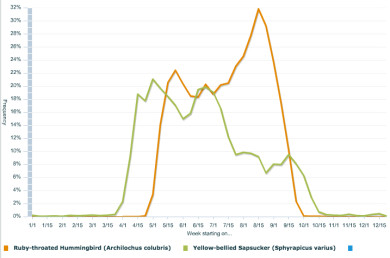
Annual phenology of Ruby-throated Hummingbird and Yellow-bellied Sapsucker from birdwatchers reporting observations to Vermont eBird. Hummingbirds arrive shortly after sapsuckers and take advantage of their sap wells.
But not all woodpeckers have long, barbed tongues. The Yellow-bellied Sapsucker has a relatively short tongue with feather-like bristles on the tip. These help the birds lap up sap via capillary action as it oozes from small rows of holes they drill into tree bark.
Ruby-throated Hummingbirds that have just arrived take advantage of these tapped trees in the early spring when there are few flowers. With their similarly long, brush-tipped tongue, hummingbirds hover near the holes and lick the sap. They can extend and retract their tongue about 13 times a second. They use the same technique to lap nectar from blooming flowers.
Spring Ephemeral Wildflowers
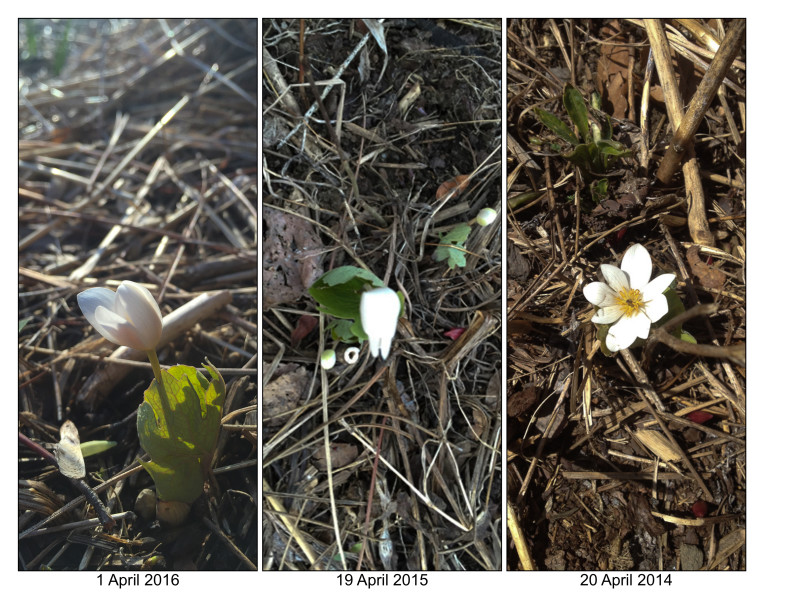
The same Bloodroot plant monitored for three years flowered nearly three weeks earlier this year. / K.P. McFarland
Spring ephemeral wildflowers are perennial woodland plants that sprout from the ground each early spring, bloom quickly, and seed before the canopy trees overhead fully leaf out. Once the forest floor is deep in shade, the leaves wither away, leaving just the roots, rhizomes and bulbs underground. This allows the plants to take advantage of the full sunlight levels reaching the forest floor during early spring.
Many of these plants rely on myrmecochory — seed dispersal by ants. The seeds of spring ephemerals bear fatty external appendages called eliaosomes. Ants harvest and carry them back to their nests and eat them. The unharmed seeds are thrown into the trash bin and eventually germinate. A single ant colony may collect as many as a thousand seeds over a season. Unlike seeds dispersed by birds or wind, on average, a seed is only carried about two meters from the parent plant. With such short distance dispersal, forest fragmentation is a threat to the survival of spring ephemerals. Once these plants are gone from the forest, it is rare that they return.
Long-term flowering records initiated by Henry David Thoreau in 1852 have been used in Massachusetts to monitor phenological changes. Phenology, the study of the timing of natural events such as migration, flowering, leaf-out, or breeding, is key to examine and unravel the effects of climate change on ecosystems. Record-breaking spring temperatures in 2010 and 2012 resulted in the earliest flowering times in recorded history for dozens of spring-flowering plants of the eastern United States.
You can help us monitor spring ephemeral phenology across Vermont. We’ve chosen 10 common spring ephemeral wildflowers for everyone to monitor. Find a place to monitor in a forest near you or simply record the status of those you find while exploring. You can enter your observations on our site at iNaturalist Vermont. Please include a photograph(s) of the plant and in the box next to “Add a field”, type in Flowering Phenology (select bare, flower, or fruit).
Focal Wildflowers (click to see field guide at iNaturalist):
Trout Lily (Erythronium americanum)
Bloodroot (Sanguinaria canadensis)
Marsh Marigold (Caltha palustris)
Spring Beauty (Claytonia caroliniana)
Red Trillium (Trillium erectum)
Painted Trillium (Trillium undulatum)
Starflower (Trientalis borealis)
Dutchman’s Breeches (Dicentra cucullaria)
Squirrel Corn (Dicentra canadensis)
Jack-in-the-pulpit (Arisaema triphyllum)
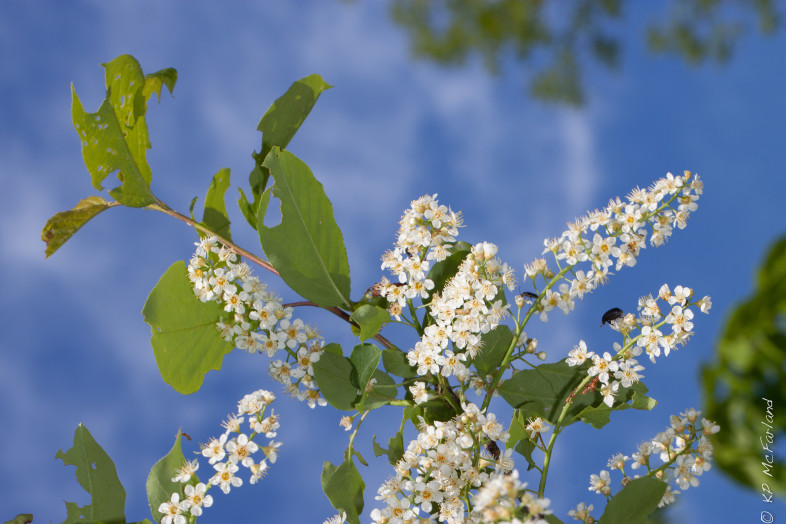
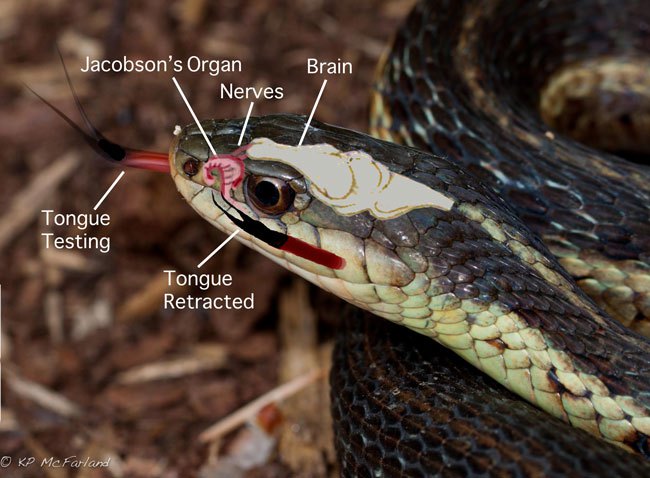
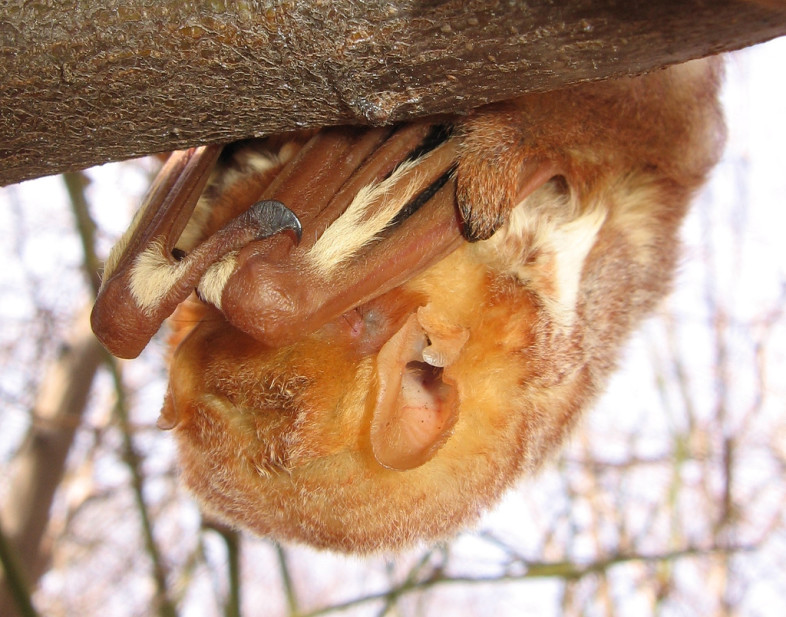
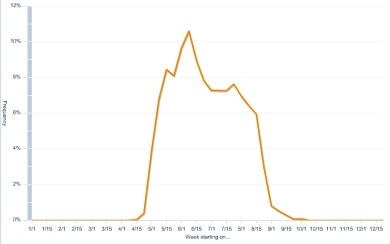
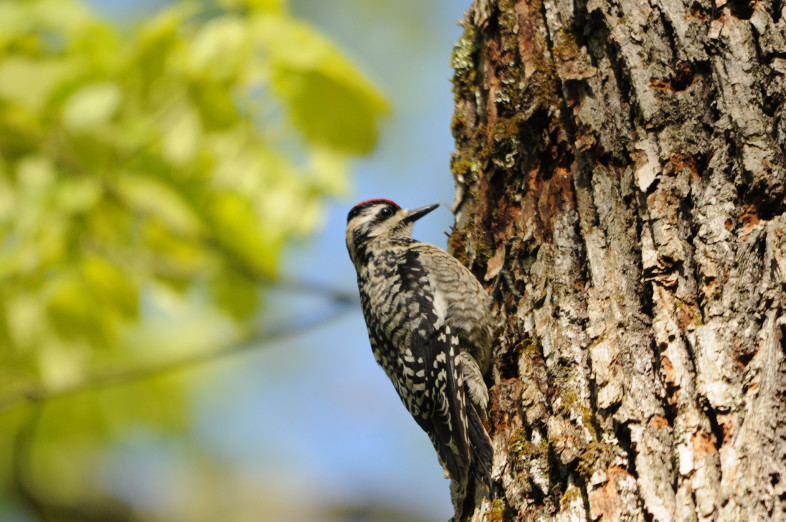

Awesome work!!
Loved this! Very poetic.
This is a very interesting work and it is beautifully written.